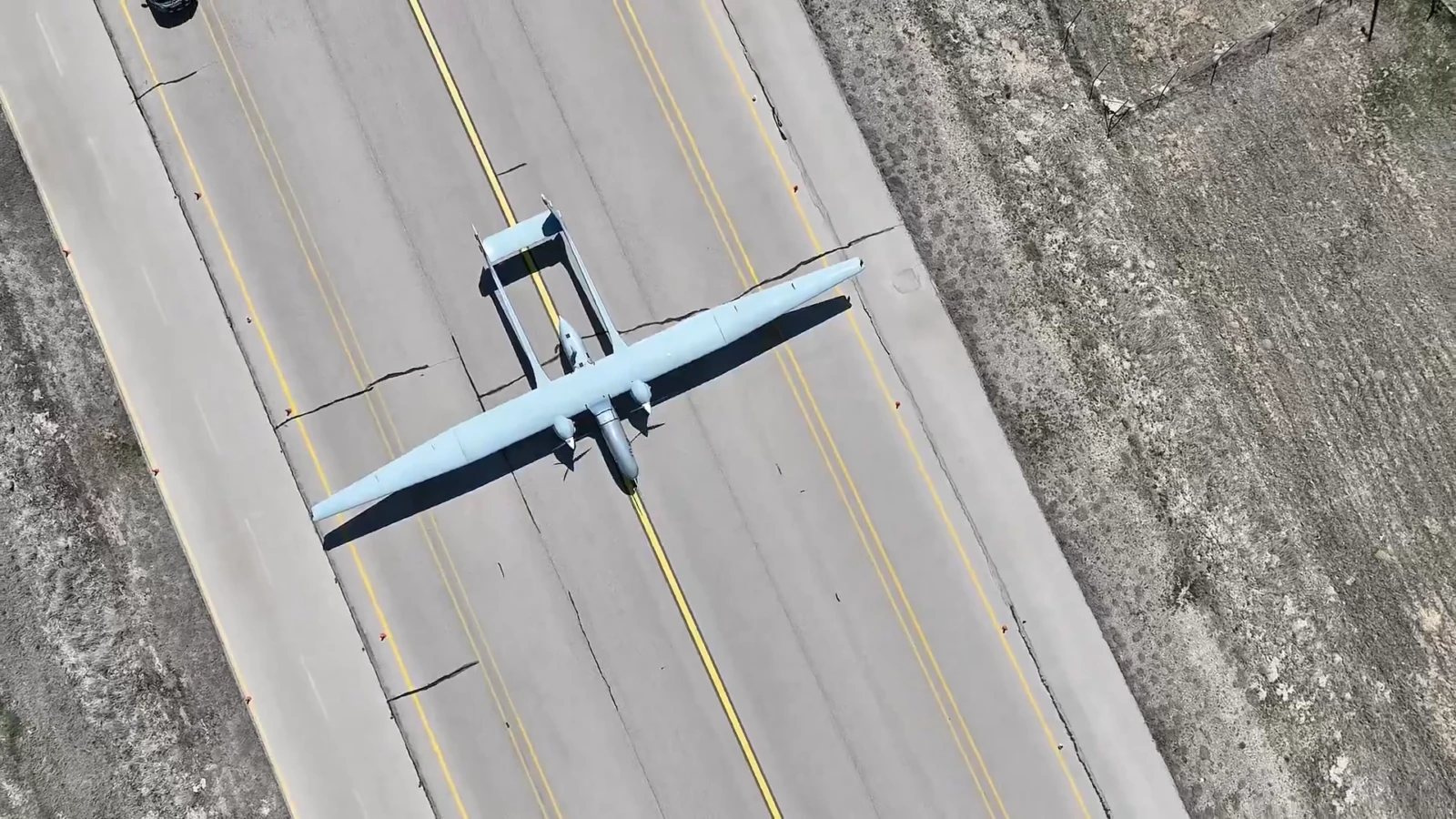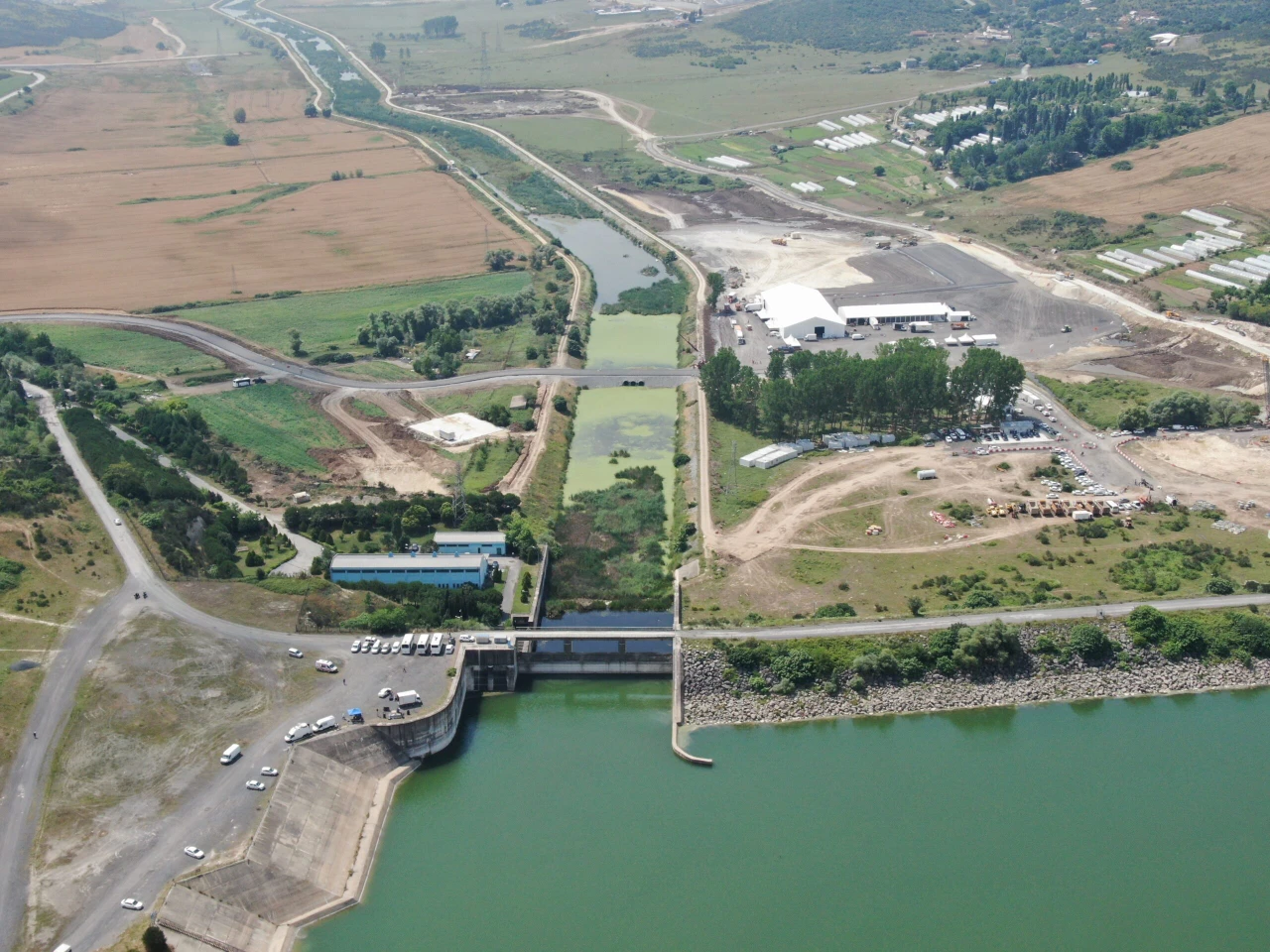Türkiye’s Aksungur UAV sets altitude record with indigenous engine TEI-PD170
 Screengrab from the video of TAI Aksungur UAV's flight with the locally manufactured TEI-PD170 engine on Apr 20, 2025. (Photo via X / @TUSAS_TR)
Screengrab from the video of TAI Aksungur UAV's flight with the locally manufactured TEI-PD170 engine on Apr 20, 2025. (Photo via X / @TUSAS_TR)
Türkiye’s domestically developed unmanned aerial vehicle (UAV) Aksungur, produced by Turkish Aerospace Industries (TAI), has reached an altitude of 40,000 feet using the locally manufactured TEI-PD170 engine, breaking a new altitude record for national aerospace engineering.
In a statement by TAI, the record-setting flight also marked the highest altitude at which Aselsan’s electro-optical system ASELFLIR-500 (AF500) and ASPILSAN’s heated battery system were successfully tested onboard the UAV.
“With every success we receive, we rise even higher and walk towards the future with stronger steps. I am proud of this success, which is the guarantee of a strong future,” said TAI General Manager Mehmet Demiroglu in a social media post.
TEI’s key developments
- 2014: TEI-TJ90 turbojet unmanned aerial vehicle (UAV) engine for high-speed target drone Simsek
- 2015: TEI-PG115 gasoline UAV engine
- 2016: TEI-PD155 diesel UAV engine for Anka
- 2017: TEI-PD170 diesel UAV engine for Anka UAV and TEI-TS1200 core engine for Gokbey helicopter
- 2018: T700-TEI-701D engine for T70 Black Hawk helicopter
- 2019: TEI-PG50 engine for kamikaze UAV Kargi and TEI-PD222-DT engine
- 2020: TEI-TJ300 engine for medium-range anti-ship missiles, TEI-PD180ST, and TEI-TS1400 engines
- 2021: TEI-PD222ST engine
Integration of national technologies
The test flight highlighted the integration of multiple Turkish defense technologies.
Along with the TEI-PD170 engine, the mission included Aselsan’s ASELFLIR-500, a high-performance electro-optical reconnaissance and targeting system, and ASPILSAN’s heated battery unit, both of which were tested under high-altitude conditions.
The ASELFLIR-500 system is designed for fixed- and rotary-wing platforms and features 3-5 micrometer high resolution infrared camera, Short-wave infrared (SWIR), and daylight cameras, laser target designation, and tracking systems.

Continuous advancement and operational success
The TEI-PD170 engine, developed since 2013 and tested onboard the ANKA platform in 2017, has been successfully powering Aksungur through multiple missions.
The twin-engine UAV has logged substantial flight hours and is currently in use by the Turkish Armed Forces and export customers.
Earlier this month, Aksungur demonstrated precision strike capabilities using Aselsan-produced LGK81 and LGK82 guided munitions, achieving direct hits on designated targets.

Strategic impact on national defense
Secretary of the Defense Industry Agency Haluk Gorgun also emphasized the broader strategic importance of the achievement in a social media post and said, “This synergy captured in the sky with our domestic engine TEI-PD170, our national electro-optical camera Aselsan AF500, and our strategic class UAV Aksungur is not only a technical success; it is also a sign of the rise determinedly written by our national aviation.”
Gorgun also confirmed that ASPILSAN’s battery system operated successfully under challenging high-altitude conditions.
Gorgun also stated that the milestone represents a new threshold in integrated national defense technologies. “With our local, national and integrated systems, we are leaving our mark in the skies and crossing new thresholds together in our defense industry,” he concluded.



